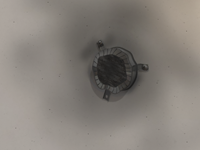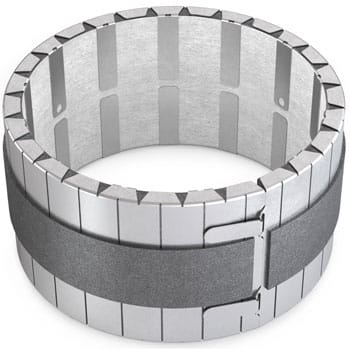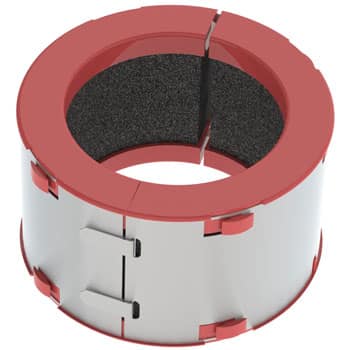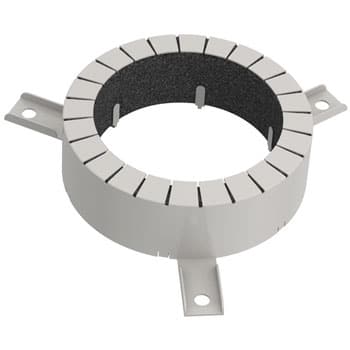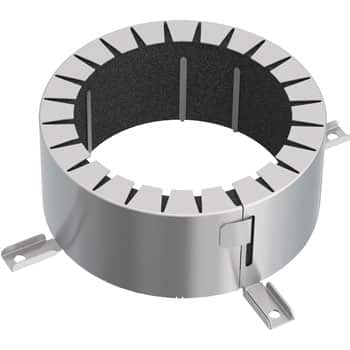Fire resistant collars
– Designed for Quick & Easy installation
– All collars are UKCA certified
– Unparalleled Quality
– Unbeatable Price Value
– Exceptional Service
– Made & designed for the UK market

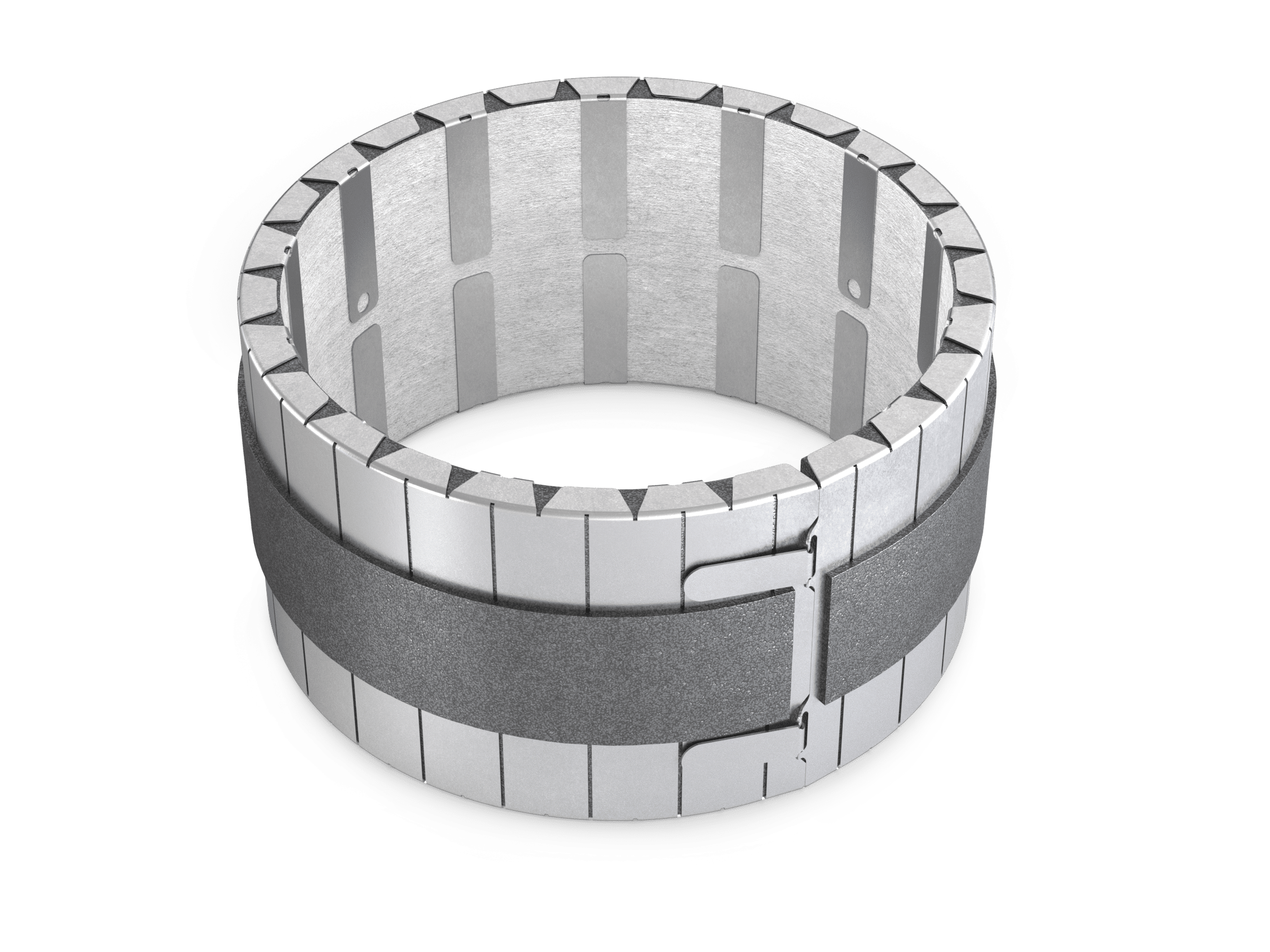
– Designed for Quick & Easy installation
– All collars are UKCA certified
– Unparalleled Quality
– Unbeatable Price Value
– Exceptional Service
– Made & designed for the UK market

> MG-U Series | 120' fire resistance | D. 32mm > 160mm
MG-U L125
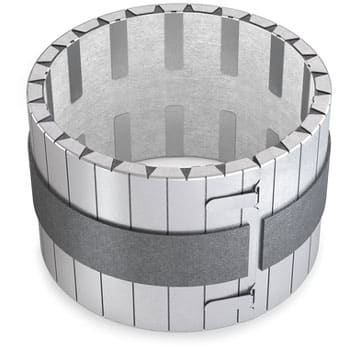
120 minutes fire resistant collar specifically designed for use in flexible walls of 125mm
MG-U L150

120 minutes fire resistant collar specifically designed for use in flexible walls of 150mm
> MG2 | 180' fire resistance | D. 40mm > 160mm
> MG2-A Series | 120' or 180' fire resistance | D. 200mm > 400mm
MG2-A XL
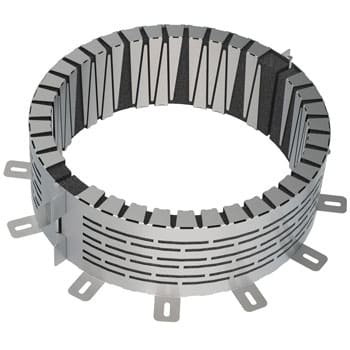
120 minutes fire resistance collar available in large diameters & suitable for surface mounting
Ensuring Fire Safety:
Where Are Fire-Resistant Collars Required?
Rf-Technologies
Meta Description: Discover why fire-resistant collars are essential for maintaining building safety and compliance. Learn where these collars are required and how they prevent the spread of fire.
In today’s world, ensuring optimal fire safety measures within buildings and structures is paramount. Fire-resistant collars play a pivotal role in safeguarding lives and property by containing the spread of fire and smoke. But where are these fire-resistant collars required, and why are they so crucial?
1. Commercial Buildings: Fire-resistant collars are a necessity in commercial buildings, where various services such as plumbing, electrical, and ventilation systems penetrate through fire-rated walls and floors. These collars create a barrier around these penetrations, preventing the passage of flames and smoke to other parts of the building.
2. Residential Complexes: In residential complexes and multi-story buildings, fire-resistant collars are essential around openings created by pipes and cables. These collars ensure that a fire breakout in one apartment or section doesn’t quickly spread to adjacent units, giving residents vital time to evacuate safely.
3. Industrial Facilities: Industries house numerous pipes, ducts, and cables that pass through fire-rated barriers. Fire-resistant collars are a must in these environments to limit fire propagation and protect workers, equipment, and valuable assets.
4. Healthcare Institutions: Hospitals and healthcare facilities have critical infrastructure passing through fire-resistant walls and floors. Fire-resistant collars safeguard these sensitive areas, helping to maintain uninterrupted services even in case of a fire emergency.
5. Educational Institutions: Schools and universities require fire safety measures to ensure the wellbeing of students and staff. Fire-resistant collars are installed around penetrations in educational buildings, minimizing the risk of fire spread and allowing safe evacuation.
6. Hospitality Sector: Hotels, resorts, and restaurants often have complex systems running through fire-rated barriers. Fire-resistant collars maintain fire compartmentalization, preventing devastating fire incidents that could threaten guests’ safety and comfort.
7. Transportation Hubs: Airports, train stations, and bus terminals handle a high volume of people daily. Fire-resistant collars play a crucial role in maintaining fire compartmentalization, preventing chaos and ensuring the safe evacuation of passengers during emergencies.
In conclusion, fire-resistant collars are a vital component of modern building safety. From commercial spaces to residential areas and industrial facilities, their role in containing fire and smoke cannot be overstated. By installing fire-resistant collars where required, building owners and managers demonstrate a commitment to safety, compliance, and protecting human lives. Don’t compromise on fire safety – incorporate fire-resistant collars to ensure your building is well-prepared to tackle fire emergencies effectively.
How does a fire-resistant collar function?
When flammable (plastic) pipes are consumed by fire, gaps emerge in fire-resistant walls. Fire-resistant collars are attached around such pipes to obstruct the spread of fire to other sections. They enlarge through heat, effectively sealing the gaps and conferring fire-resistant properties.
- The fire-resistant collars are fitted around flammable pipes.
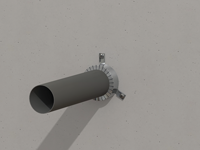
- They incorporate a top-notch intumescent substance that swells as the temperature reaches approximately 150°C.
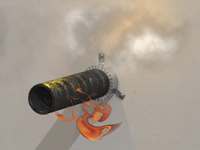
- The pipe ignites, and the intumescent material fills the aperture to hinder the fire from extending any more.
